If you’ve been searching for a genuine Shopify review, you’ve come to the right place. In this in-depth guide, I’ll share everything I’ve learned from using and testing Shopify — one of the world’s leading e-commerce platforms. You’ll discover its key features, pricing structure, ease of use, pros and cons, and how it stacks up against other major e-commerce solutions. Whether you’re launching your first online store or looking to scale an existing business, this Shopify review will help you decide if it’s the right platform to power your e-commerce success.
Shopify Review: What Is Shopify? (A Quick Overview)
In my experience testing and reviewing various e-commerce platforms, Shopify consistently stands out as one of the most beginner-friendly yet powerful tools for building an online store. At its core, Shopify is an all-in-one e-commerce solution that helps individuals and businesses create, manage, and grow their online stores — even without advanced technical knowledge.
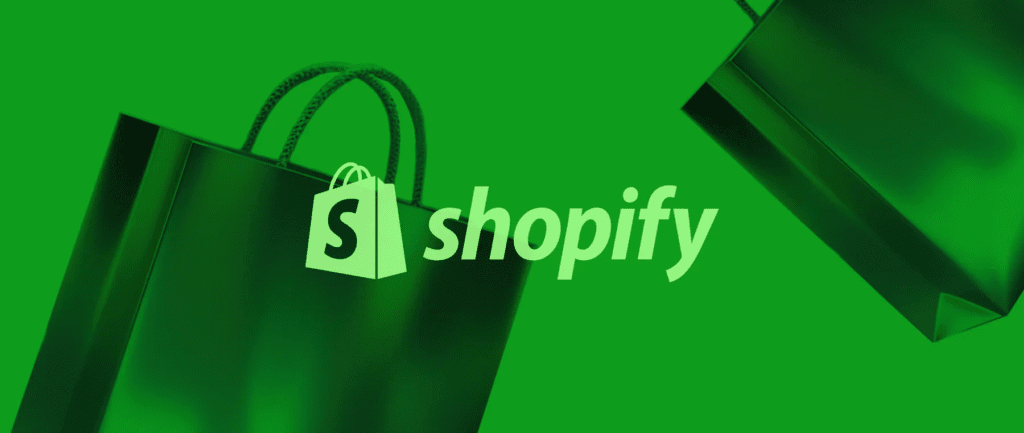
You’ll notice that Shopify offers everything you need to start selling right away: user-friendly website builder with drag-and-drop functionality, secure payment gateways, advanced inventory tracking, built-in marketing tools, and seamless integrations with major social media and sales channels. It also supports thousands of third-party apps, allowing you to customize your store’s functionality to match your business goals.
As I explored Shopify for this Shopify review, what impressed me most was its balance between simplicity and scalability. It’s perfect for beginners launching their first product line, yet robust enough for established brands managing large inventories or multiple sales channels.
By 2025, millions of entrepreneurs, small businesses, and digital creators worldwide trust Shopify to power their online operations. Whether you’re running a dropshipping business, selling handmade products, or building a brand from scratch, Shopify gives you the tools, flexibility, and reliability to succeed in today’s competitive online market.
Shopify Features: What You Get
In my experience testing Shopify for this Shopify review, what really sets it apart from other e-commerce platforms is its all-in-one design. Shopify brings together everything you need to build, manage, and grow an online store — all without the steep learning curve of traditional website development. Whether you’re a first-time store owner or scaling a growing business, you’ll find its tools practical, powerful, and easy to use.
Let’s take a closer look at the standout features that make Shopify one of the top e-commerce solutions today:
1. Online Store Builder
One of the best parts of using Shopify is its intuitive drag-and-drop website builder. When I tested it, I was able to design a clean, professional store in minutes — no coding required. You can choose from a variety of free and premium themes, all fully customizable to match your brand’s look and feel.
2. Secure Payment Processing
Shopify takes payment security seriously. Out of the box, it supports credit cards, PayPal, Apple Pay, Google Pay, and over 100 third-party gateways. This flexibility makes it easy to serve global customers while maintaining peace of mind with encrypted transactions and PCI compliance.
3. Mobile-Responsive Design
In today’s mobile-first world, it’s crucial that your store looks great on every device. I noticed that every Shopify theme automatically adjusts for smartphones and tablets, providing a seamless shopping experience for your visitors no matter where they are.
4. App Store Integration
Shopify’s App Store is one of its biggest strengths. With thousands of free and paid apps available, you can expand your store’s functionality in just a few clicks. Whether you want to automate email marketing, add upsells, or start a dropshipping business with tools like Oberlo or Printful, there’s an app for nearly every business need.
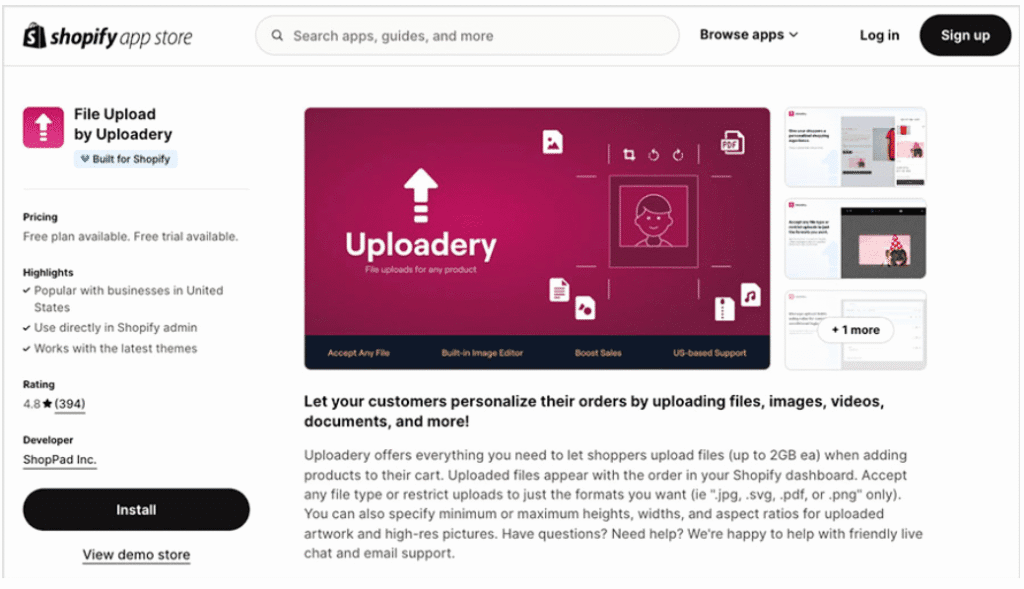
5. Inventory and Order Management
Managing products is effortless with Shopify. You can add items, track stock levels, manage product variants (like size and color), and fulfill orders — all from a single dashboard. In my experience, this centralized system saves hours of manual work, especially when your business starts to grow.
6. Multi-Channel Selling
Another standout benefit I found in this Shopify review is multi-channel selling. From one dashboard, you can list products on Facebook, Instagram, TikTok, Amazon, and more. This not only boosts visibility but also eliminates the need to juggle multiple sales systems.
7. Abandoned Cart Recovery
Few features have as much impact on revenue as abandoned cart recovery. Shopify automatically emails shoppers who leave without completing their purchase, helping you reclaim lost sales with minimal effort.
8. SEO and Marketing Tools
Shopify includes built-in SEO tools that let you edit meta titles, descriptions, and URLs — helping your store rank better in search results. You can also launch discounts, gift cards, and email campaigns, or integrate with popular platforms like Klaviyo and Mailchimp for advanced marketing automation.
In summary, Shopify’s robust set of tools makes it one of the most reliable platforms for launching and managing an online store. From design and payment processing to marketing and inventory control, everything works together seamlessly. Based on my hands-on experience, it’s clear why so many businesses — from solo entrepreneurs to major brands — rely on Shopify to power their e-commerce success.
Shopify Pricing Plans (Is It Worth It?)
This leading e-commerce platform offers several pricing plans to fit different business needs and budgets—whether you’re just starting out or scaling an established brand.
Here’s a breakdown of its main pricing plans:
1. 🆓 Free Trial Offer
Shopify usually offers a 3-day free trial, and then runs promos charges of $1/month for the first 3 months. This is a great way to test the platform risk-free.

2. Starter Plan – $5/month
Great for creators or influencers who just want a simple buy button or link to sell through messaging apps or social media.
3. Basic Plan – $19/month
Perfect for new online businesses. It includes everything you need to launch your store:
- Online store and blog
- Unlimited products
- 24/7 support
- Sales channels (social media, marketplaces)
- Basic reports
- Up to 1 staff account
4. Shopify Grow Plan – $54/month
Best for growing businesses that need more detailed analytics and lower fees:
- All Basic features
- Professional reports
- Up to 5 staff accounts
- Lower credit card and transaction fees
5. Advanced Plan – $299/month
Ideal for scaling stores with more advanced needs:
- All Shopify features
- Advanced reporting tools
- Third-party calculated shipping rates
- Up to 15 staff accounts
6. Shopify Plus Plan – Starts at $2,300/month
This is designed for enterprise-level solution for high-volume businesses and large brands.
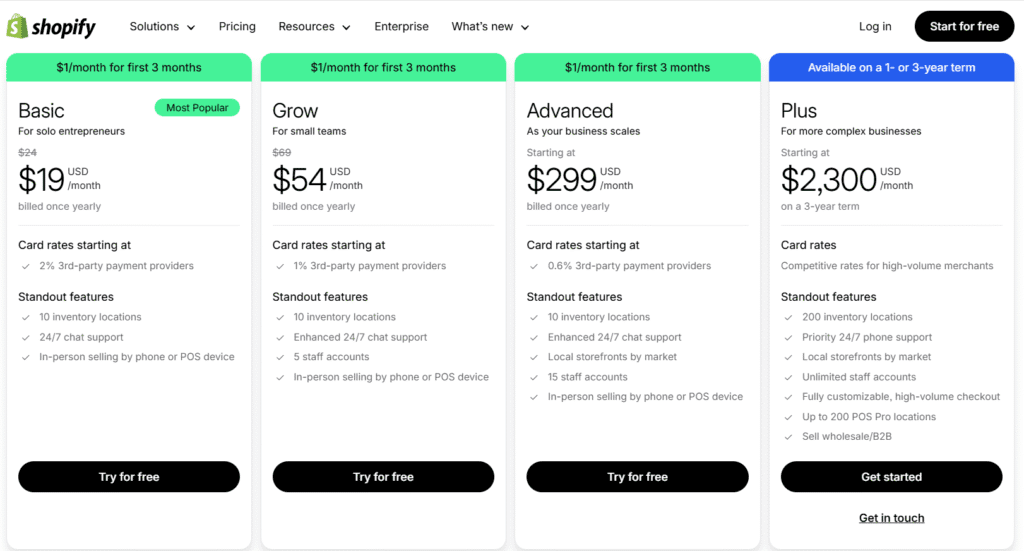
Shopify review: Shopify Pros and Cons
| ✅ Pros | ❌ Cons |
|---|---|
| ✅Easy to use with no coding skills required | Lacks free version |
| ✅All-in-one e-commerce solution with hosting and security | Transaction fees apply if not using Shopify Payments |
| ✅Beautiful, mobile-responsive templates | Potentially overwhelming for casual users |
| ✅24/7 customer support via chat, email, and phone | |
| ✅Multi-channel selling (social media, Amazon, etc.) | |
| ✅Large App Store with thousands of integrations |
Ease of Use: Shopify is Beginner-Friendly
In my experience testing the platform for this Shopify review, one of the biggest reasons Shopify continues to dominate the e-commerce space is its simplicity. It’s designed for anyone — whether you’re launching your first online store or moving an existing business online — to build, customize, and manage everything without touching a single line of code.
From setup to store management, everything about Shopify feels intuitive and well thought out. Let’s break down how it performs in terms of ease of use.
Quick & Guided Setup Process
When you first sign up, Shopify immediately guides you through an onboarding process that feels both fast and effortless. You’ll set up your store name, add your first products, choose a payment method, and connect your domain — all in a few clicks.
In my experience, the dashboard layout is one of the cleanest in the industry. Everything you need — from inventory to analytics — is organized in a way that makes sense, even for beginners.
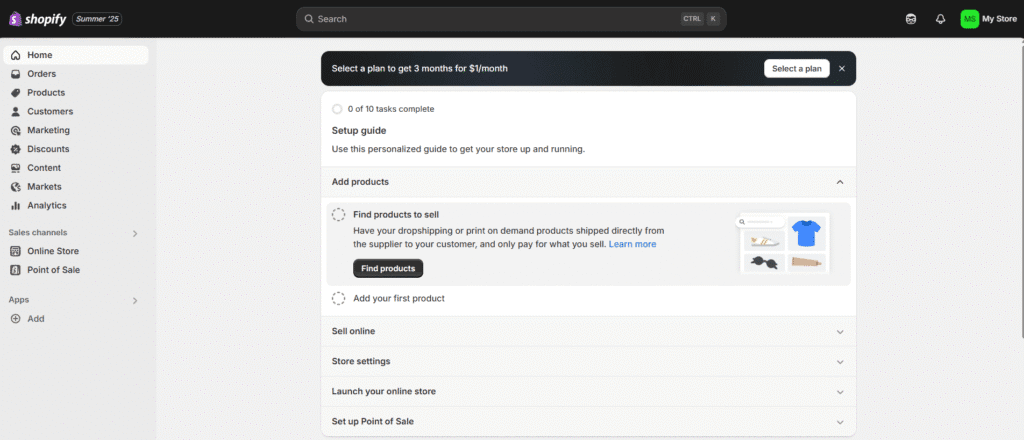
Drag-and-Drop Editor
Shopify’s drag-and-drop theme editor is where the magic happens. I was able to customize a store homepage, rearrange sections, and update content visually — all without any coding. This level of flexibility gives you complete creative control over your store design while keeping things simple.
You can easily:
- Add and rearrange homepage sections
- Upload product banners or slideshows
- Edit colors, fonts, and layouts in real time
Even if you’ve never built a website before, you’ll notice how smooth and user-friendly the process feels.
Built-In Tools for Everything
Another strength I found during this Shopify review is how many essential tools are built directly into the platform. You can:
- Manage products, inventory, and orders from one dashboard
- Track customer information and sales reports
- Connect shipping providers and automate tax settings
- Accept payments securely through integrated gateways
All of this happens seamlessly without the need for third-party software or manual setup — saving both time and frustration.
No Technical Skills Required
If you’re worried about the technical side of running a website, Shopify takes care of that for you. Hosting, updates, mobile optimization, and security are all handled automatically in the background. You can focus on selling while Shopify ensures your store runs smoothly and securely.
Customer Support: Help Is Always Available
Even the most intuitive tools need reliable support — and Shopify doesn’t disappoint. In my experience, their 24/7 customer support is one of the best in the e-commerce industry. You can reach them anytime via:
- Live chat, email, or phone support
- A comprehensive Help Center packed with tutorials and guides
- Active community forums where you can connect with other entrepreneurs
- Access to verified Shopify Experts for advanced help
Whenever I ran into a small issue, the support team was quick, friendly, and genuinely helpful — something not all platforms can claim.
Building Your E-commerce Store: Customizing Your Store
Shopify makes it surprisingly easy to create a professional-looking store, even if you have zero design experience.
Choose a Theme That Fits Your Brand
Shopify offers a wide range of free and premium themes tailored for different industries — from fashion and electronics to home décor and beauty. Each theme is mobile-responsive and can be customized to match your brand’s look and feel.
Customize with the Drag-and-Drop Editor
Once you’ve chosen a theme, you can use Shopify’s drag-and-drop customization tools to personalize everything — homepage banners, product grids, testimonials, and even blog sections. The live preview makes it easy to see every change before publishing.tent areas. Add banners, slideshows, product grids, testimonials, blog sections, and more—no coding required.
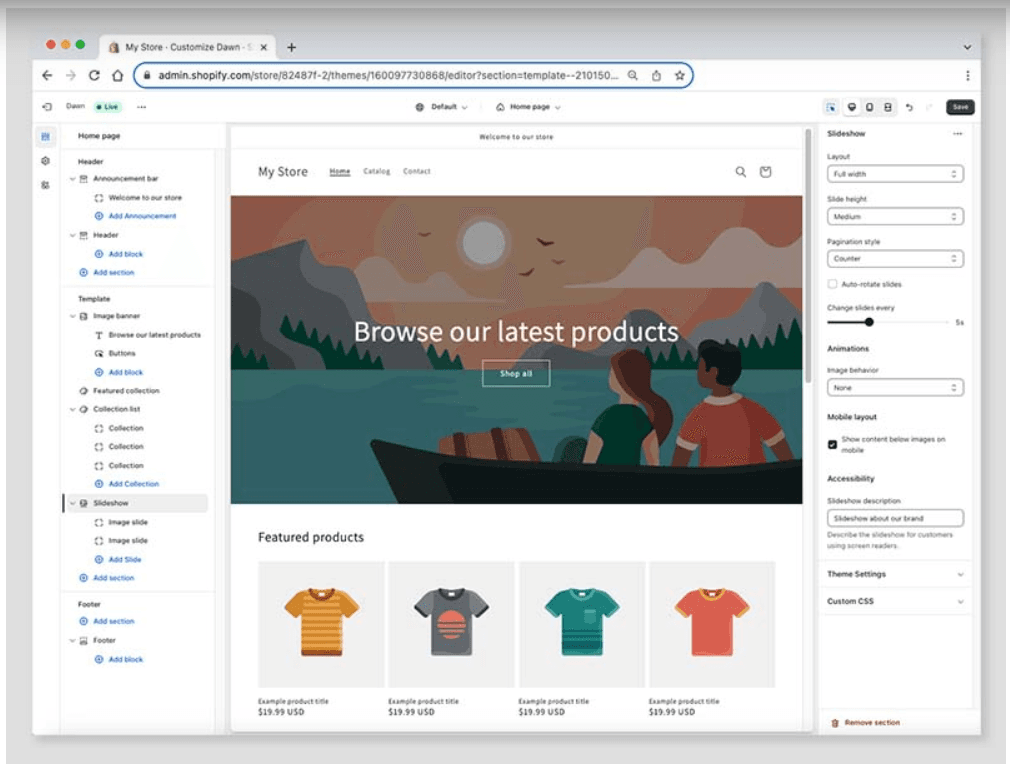
Add Your Branding Elements
Uploading your logo, defining your brand colors, and setting consistent typography all help create a cohesive and trustworthy shopping experience. Shopify makes this process simple but impactful.
Product Pages and Navigation
Creating product pages is just as easy. You can add multiple images, detailed descriptions, and product variants (like sizes or colors). You can also structure your navigation menus and footer to make browsing effortless for your customers.
Add Apps for Extra Functionality
If you ever need advanced functionality — such as product reviews, email popups, or smart product filters — Shopify’s App Store has thousands of integrations that can enhance your site in just a few clicks. Many apps even offer visual design customization options to blend perfectly with your store.
Final Thoughts on Ease of Use
Based on my hands-on experience, Shopify’s ease of use is one of its biggest selling points. The platform combines a beginner-friendly interface with professional-grade tools that grow with your business. Whether you’re launching your first store or managing a large online brand, Shopify makes the entire process straightforward, efficient, and even enjoyable.
Shopify review: Shopify vs Other Platforms
When writing this Shopify review, I wanted to see how Shopify truly performs compared to other popular e-commerce platforms. While Shopify is often viewed as the industry leader, competitors like WooCommerce, Wix, Squarespace, and BigCommerce each bring something unique to the table.
After testing and researching each, I found that Shopify consistently stands out for its balance of simplicity, power, and scalability. Still, it’s important to understand where it shines — and where other tools might be a better fit for specific needs.
Let’s break down how Shopify compares across key areas such as ease of use, customization, pricing, and overall flexibility.
🔄 Shopify vs WooCommerce
In my experience, WooCommerce is ideal if you’re already familiar with WordPress and want full control over every aspect of your online store. It’s open-source, meaning you can customize it endlessly — but that flexibility comes at the cost of convenience.
- WooCommerce Pros: Highly customizable, strong SEO control, lower upfront cost if you already have hosting.
- WooCommerce Cons: Requires technical know-how, manual plugin management, and ongoing maintenance.
In contrast, Shopify handles hosting, security, and updates automatically. For most beginners and non-technical users, Shopify’s all-in-one system saves time and reduces the risk of technical issues — making it the better choice for those who value simplicity and reliability.
| Feature | Shopify | WooCommerce |
|---|---|---|
| Ease of Use | Beginner-friendly, no coding needed | Requires WordPress setup and plugins |
| Hosting Included | ✅ Yes | ❌ No (self-hosted) |
| Maintenance | Shopify handles it all | You manage updates & security |
| Customization | Limited without code | Highly customizable with coding |
🔄 Shopify vs Wix
When testing Wix, I found it excellent for personal or small business websites. Its drag-and-drop editor is smooth and user-friendly. However, when it comes to scaling an online store, Shopify easily takes the lead.
- Wix Pros: Easy to use, affordable for small stores, visually appealing templates.
- Wix Cons: Limited scalability, fewer advanced e-commerce tools, and weaker inventory management.
If your goal is to build a long-term online business with growth potential, Shopify’s robust app ecosystem and advanced sales tools make it a stronger investment.
| Feature | Shopify | Wix |
|---|---|---|
| E-commerce Power | Built for selling | Basic e-commerce tools |
| App Integrations | Thousands of apps available | Fewer integrations |
| Scalability | Excellent for growth | Limited as you scale |
| Design Flexibility | Clean themes + editor | More design flexibility, less depth |
🔄 Shopify vs Squarespace
Squarespace is one of the most beautifully designed website builders I’ve tested. It’s perfect for creatives — photographers, designers, and bloggers — who want visually stunning websites. However, in terms of pure e-commerce functionality, Shopify outperforms it easily.
- Squarespace Pros: Gorgeous templates, easy editing, great for branding and content-focused sites.
- Squarespace Cons: Limited payment options, fewer integrations, and weaker inventory features.
If aesthetics are your top priority, Squarespace might work. But for serious online selling, Shopify’s transaction management, reporting tools, and third-party integrations make it the more complete business solution.
| Feature | Shopify | Squarespace |
|---|---|---|
| Best For | Online stores | Creative portfolios |
| E-commerce Features | Advanced and scalable | Basic selling tools |
| Payment Options | Wide selection, including Shopify Pay | More limited |
| App Ecosystem | Extensive | Fewer third-party apps |
🔄 Shopify vs BigCommerce
Among all competitors, BigCommerce comes the closest to Shopify in terms of power and functionality. Both platforms cater to serious online sellers, but Shopify’s interface is much easier to navigate, especially for beginners.
- BigCommerce Pros: Strong built-in features, no transaction fees, scalable for large stores.
- BigCommerce Cons: Steeper learning curve, fewer design options, and a less intuitive backend.
In my experience, BigCommerce is great for enterprise-level businesses, while Shopify offers the same strength in a more approachable package — perfect for small and medium-sized stores.
| Feature | Shopify | BigCommerce |
|---|---|---|
| Ease of Use | More intuitive | Slightly more complex |
| App Marketplace | Huge app ecosystem | Smaller app store |
| Pricing Flexibility | More beginner-friendly | Pricing based on revenue tiers |
| Integration | Easier for small businesses | Better for enterprise-level users |
✅ Final Thought
After testing multiple platforms for this Shopify review, my conclusion is clear — Shopify provides the best all-around solution for most online sellers. It combines beginner-friendly design, powerful built-in tools, and professional scalability in one platform.
While WooCommerce or BigCommerce might offer more flexibility for developers, and Wix or Squarespace cater better to personal brands, Shopify strikes the ideal balance between usability and advanced functionality.
Whether you’re starting your first store or scaling to thousands of sales, Shopify delivers the reliability, performance, and support you need to build a sustainable online business.
You can try:
Shopify online store free trial landing page
Shopify Ecommerce business free trial landing page
Who Should Use Shopify (And Who Shouldn’t)
✅ Who Should Use Shopify
1. First-Time Entrepreneurs
If you’re launching your first online store and don’t want to deal with coding or technical setup, Shopify is perfect. In my experience, its intuitive dashboard, built-in hosting, and drag-and-drop store builder make it easy to create a professional store in hours — not days. Everything from security to checkout integration is already taken care of.
2. Growing Small to Medium Businesses
Based on my testing, Shopify truly excels as your business grows. The platform’s scalability, combined with powerful inventory management, automated tax settings, and multi-channel selling options, helps small and mid-sized businesses streamline operations without hiring a developer.
3. Dropshippers and Print-on-Demand Sellers
If you’re into dropshipping or print-on-demand, Shopify is a standout choice. It integrates seamlessly with top apps like Spocket, Printify, and DSers. In my experience, the setup process is incredibly smooth — you can import products, set margins, and start selling without touching a warehouse.
4. Brick-and-Mortar Stores Expanding Online
For physical retailers looking to expand into e-commerce, Shopify’s POS (Point of Sale) system is a game changer. You can sync your in-store and online sales, track inventory in real-time, and offer flexible pickup or delivery options — all from one dashboard. I personally found this feature especially convenient for hybrid business models.
5. Global Sellers
Shopify supports multi-currency transactions, international shipping, and multiple languages, making it a reliable option for global entrepreneurs. In my testing, the built-in translation tools and region-based tax handling simplified selling to international customers.
🚫 Who Shouldn’t Use Shopify
1. Bloggers or Content-Heavy Sites
If your main goal is content creation rather than e-commerce, Shopify might not be the best match. Platforms like WordPress or Ghost offer more flexible blogging and SEO customization. In my experience, while Shopify’s blog editor is functional, it’s not ideal for content-heavy sites.
2. Businesses with Highly Custom Requirements
For brands that need highly tailored features, designs, or backend integrations, Shopify’s structure may feel restrictive. While you can use custom code or apps, these often add to costs and complexity. In my Shopify review testing, I found that businesses with advanced customization needs might prefer WooCommerce or Magento instead.
3. Budget-Conscious Beginners
Shopify’s pricing is fair for what it offers — but it’s not the cheapest option. Between monthly plans, premium themes, and app subscriptions, costs can add up. If you’re on a tight budget and just experimenting, a more affordable platform like Wix or Ecwid may be a better starting point.
Final Thoughts
In my experience, Shopify is best for entrepreneurs who want an easy, professional, and scalable e-commerce solution without deep technical skills. However, if you’re primarily a blogger, need heavy customization, or are working with a shoestring budget, it might not be the most cost-effective choice.
Whether you’re just getting started or scaling globally, this Shopify review shows why it continues to be one of the most trusted and user-friendly e-commerce platforms in 2025.
Conclusion: Is Shopify Worth It ?
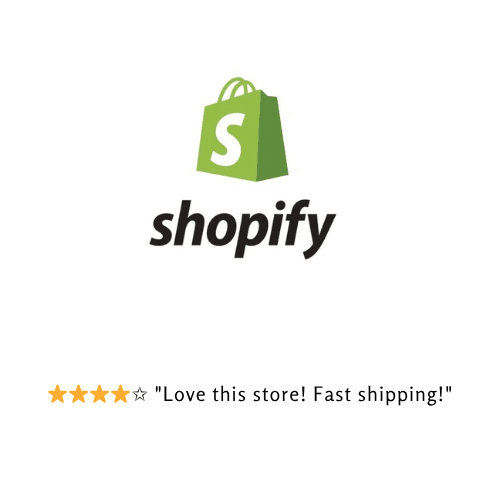
After testing and analyzing the platform in detail for this Shopify review, I can confidently say that Shopify is one of the most reliable and well-rounded e-commerce solutions available today. In my experience, what truly sets Shopify apart is how effortlessly it combines power with simplicity — even if you have zero technical background, you can still build a professional-looking online store in no time.
During my hands-on testing, I noticed how intuitive Shopify’s interface feels. Everything from adding products to customizing your storefront and setting up payments is straightforward. The platform also stands out for its stability and scalability — it grows with your business, whether you’re just starting or managing thousands of monthly orders.
✅ What Makes Shopify Worth It
Here’s why I found Shopify particularly impressive:
- Ease of Use: The drag-and-drop builder and clean dashboard make setup simple, even for complete beginners.
- Built-In Features: Shopify includes everything you need — hosting, security, marketing tools, and payment integrations — right out of the box.
- App Ecosystem: You can extend functionality with thousands of trusted apps for SEO, dropshipping, analytics, and more.
- Scalability: From startups to global brands, Shopify performs consistently well as your business grows.
⚠️ A Few Drawbacks to Keep in Mind
Of course, no platform is perfect. In my testing, I found Shopify’s customization options somewhat limited compared to open-source alternatives like WooCommerce. Its pricing can also add up when you include premium themes and apps. However, for most users, the ease of use and built-in reliability outweigh these drawbacks.
Final Verdict
So, is Shopify worth it? Absolutely — especially if you value convenience, security, and scalability in one package. While it might not be the cheapest or most customizable option, Shopify strikes a nearly perfect balance between user-friendliness and professional-grade performance.
Whether you’re launching your first store, expanding a brick-and-mortar business, or switching from another platform, this Shopify review makes it clear that Shopify remains one of the best choices for entrepreneurs who want to build and grow a successful online business with confidence.
(Disclaimer: This review may contain affiliate links, which means I may earn a small commission if you purchase through them — at no extra cost to you. This helps support the site and allows me to continue testing and reviewing cybersecurity tools like WEBROOT Master.)
You may also read about 👉 The WEBROOT Master Anti-virus


